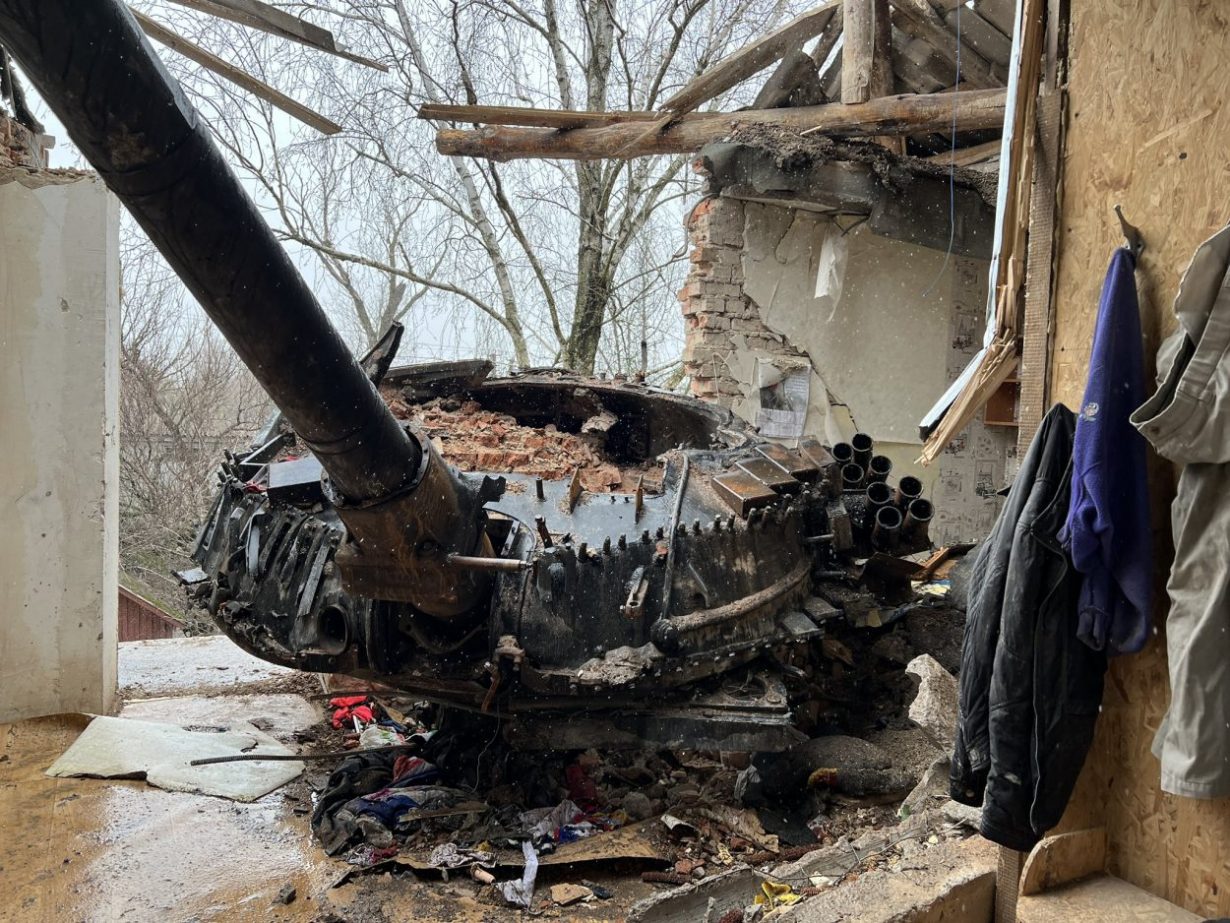A Russian magazine has listed common and rookie tactical mistakes committed by their ground forces in battlefield maneuvering and radio communications while touching upon Ukraine’s own drone and electronic warfare (EW) approaches and strategies.
Unmanned systems and Russian defense technology expert Samuel Bendett tweeted a page from Russian military affairs publication Amreijski Sbornik, which also suggested standard operating procedures during drone operations.
Innovative use of civilian UAVs and disciplined ground-based air denial have been the highlights of the Ukrainian military. Russia meanwhile succeeded in sophisticated electronic warfare, hypersonics, and long-range missile attacks.
In the Twitter thread, Bendett talks about the Ukrainian military’s “widespread use of ambushes, usually arranged in bushes near hollows, near forest glades, edges, near roads, clearings and paths passing through ravines, and around turns along the routes of Russian military advancement (ambush action time 5-10 minutes, then a quick withdrawal).”
Ukrainian Artillery, Drone & Small Team Raids
These are common infantry tactics meant to slow down an advancing army and were visible earlier in the war in several videos where Russian tank and armored columns often came under fire from anti-tank rockets before their infantry fighting vehicles fired back.
The long supply lines of destroyed Russian trucks have also been assessed to have come under fire with the same method.
Ukraine also used “artillery at long ranges (up to 30 kilometers) with fire guidance and adjustment with the help of UAVs constant rotation and regrouping of units to maintain mobile defense.”
The employment of commercially available DJI drones by both Ukraine and Russia for artillery fire correction has been a defining feature of the war. But the shoot-and-scoot tactics mentioned above do not seem to have made any significant battlefield impact as Ukraine has nearly lost all its Soviet-era field howitzers and solely relies on Western-made M777, M109, or Polish KRAB self-propelled guns. Many of these themselves have been destroyed by Russian loitering munitions like the Lancet-3.
The magazine also noted Ukraine’s “active use of Electronic Warfare, video surveillance, sensors, high-precision measurement and aiming devices, camera traps for fire destruction; availability of computer tablets with software for exchanging information via the internet and setting tasks.”
The Armed Forces of Ukraine (AFU) soldiers also used “mobile groups” to conduct short 5 minutes at night on 2-3 pick-up truck-type with around ten people. “(They) then called in rocket artillery fire from Multiple Rocket Launch Systems (MLRS) for 2-3 minutes after discovering Russian positions due to their use of “open communication channels or when using cell phones.”
This grave Russian Operational Security (OpSec) mistake of using unencrypted jammable radios and mobile phones from the earlier days of the war has come under severe criticism and mockery.
Reasons for this have both been techno-industrial, where Russian industry lagged in developing a new generation of software-defined radios, and a general laxity and indiscipline on this front by both lower-rung soldiers and senior Generals.
“Ukrainian infantry actions (were) protected by snipers, artillery, air defense, and electronic warfare; destruction of weakly guarded Russian convoys (fuel and ammunition) in populated areas by letting our reconnaissance, forward (raid) detachments through,” the magazine said.
It is however an overstatement that Russian infantry and artillery actions have nothing to show for, given the large number of Ukrainian casualties, admitted by European Council President Ursula von Der Leyen, Ukrainian Presidential Adviser Mykhailo Podolyak, and President Volodymyr Zelenskyy himself.
Nearly 20 percent of Ukrainian territory that includes the east (Donbass) and the south (Zaporozhye, Kherson, and Crimea) is under Russian control, which would not have been possible without overwhelming superiority in the quality and diversity of artillery systems and air power.

Rookie Mistakes In Infantry, Armor Maneuvers
Its ‘long war’ of fighting in a slow, attritional, and non-time-sensitive manner can now be said to have evolved to allow for and then make up for such mistakes. The outcome of a rapid, piercing Blitzkrieg would have required pressing in overwhelming force, making it far more escalatory and triggering much more unfavorable diplomatic and strategic outcomes.
The magazine notes these tactical battlefield mistakes, chief of them being “chaotic movement of military columns, single vehicles, including civilian ones, along the roads in our rear; congestion of personnel in combat formations.”
This also motivated armored maneuvers, characterized by “inefficient anti-tank defense and lack of additional protection from enemy anti-tank weapons.” Speaking to the EurAsian Times, retired Indian Army tank man, Colonel Rajendra Bhaduri, too noted how Russian armored movements have “surprisingly been rife with rookie mistakes.”
“Their tanks moved without infantry cover, especially in built-up areas, making them easy targets for anti-tank fire. It is staggering how they forgot such fundamental battlefield practices.” Bhaduri said.
Bhaduri, however, said these were “tactical defeats” which do not count since Russia has “achieved all its strategic and political objectives.”
Poor Operational Security
Lastly, the continued use of “open communication channels and cell phones..with SIM cards (helped) the enemy’s electronic intelligence and (drawing artillery or mortar fire on your position.”
Army Technology noted how violating simple OpSec rules like using unencrypted mobile phones allowed the AFU to “exploit” the vulnerability and become an “endemic threat” where high-ranking officers were killed in targeted artillery strikes.
As regards UAV operations, it advised Russian forces to launch drones like quadcopters “far away from active battle formation groups; pilot (it) from the launch point to a low altitude of 50 to 150 meters to the reconnaissance area at a distance of 300 to 500 meters.” It should be flown back in the same order, “but along different routes.”
- The author can be reached at satamp@gmail.com
- Follow EurAsian Times on Google News